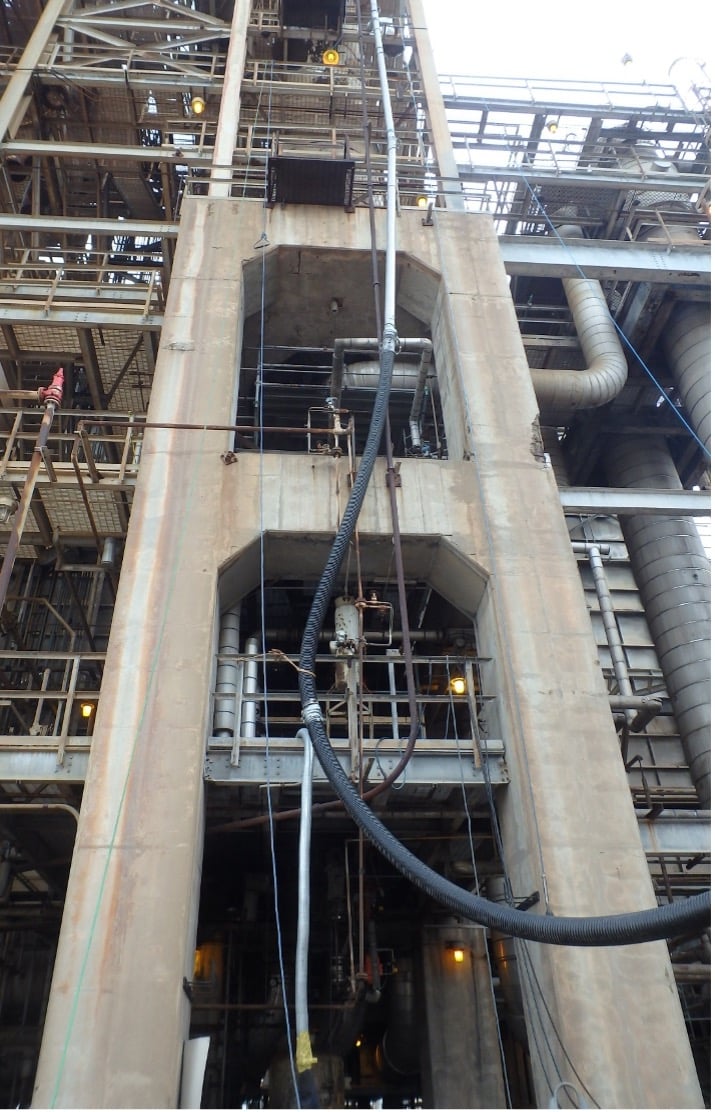Introduction
The catalytic reformer support structure shown in Figure 1 is a conventionally reinforced cast-in-place concrete tabletop originally constructed in 1978 that supports a catalytic reformer, or platformer, and associated steel framing in a refinery on the Gulf Coast. The concrete tabletop consists of a 4.25 ft (1.3 m) thick upper deck that measures approximately 26 ft (8 m) by 18 ft (5.5 m). The upper deck has an octagonal penetration that allows the bottom head of the catalytic reformer and associated piping to pass through the deck as depicted in Figure 2. Four square conventionally reinforced concrete columns span from the mat foundation to the upper deck.


The ASME Section VIII Division 1 designed catalytic reformer is over 124 ft (38 m) tall and supported with a conical skirt and base ring secured to the tabletop with anchor rods. The catalytic reformer has an operating temperature of 1,000°F (538°C) and weighs nearly 370,000 lbs (168,000 kg) when fully loaded with catalyst.
As a result of the operating temperature of the catalytic reformer, the upper deck of the reformer support structure is exposed to high temperatures. The sides of the octagonal penetration near the bottom head of the catalytic reformer reach sustained temperatures of 530°F (277°C) based on IR inspection. A steam quenching ring is installed near the bottom head to mitigate potential fires resulting from the aggressive thermal transients during operation which challenge flange seal performance; as a result, the sides of the octagonal penetration and bottom of the upper deck have been periodically exposed to steam conditions throughout the service life.
Refinery personnel were aware that the upper deck of the catalytic reformer support structure had some level of deterioration, but the extent was not well known. Concern arose after several large concrete spalls fell onto the level below. Scaffolding was installed to catch future spalls and to mitigate future falling object hazards. Refinery personnel then contracted an engineer to perform a condition assessment to determine the criticality of repairs needed.
Condition Assessment
A condition assessment was performed during a planned short-term outage to avoid working in the radiant heat of the catalytic reformer. The assessment consisted of a visual and tactile survey, limited nondestructive examination (NDE), material testing, and structural analysis.



















Comments and Discussion
Add a Comment
Please log in or register to participate in comments and discussions.